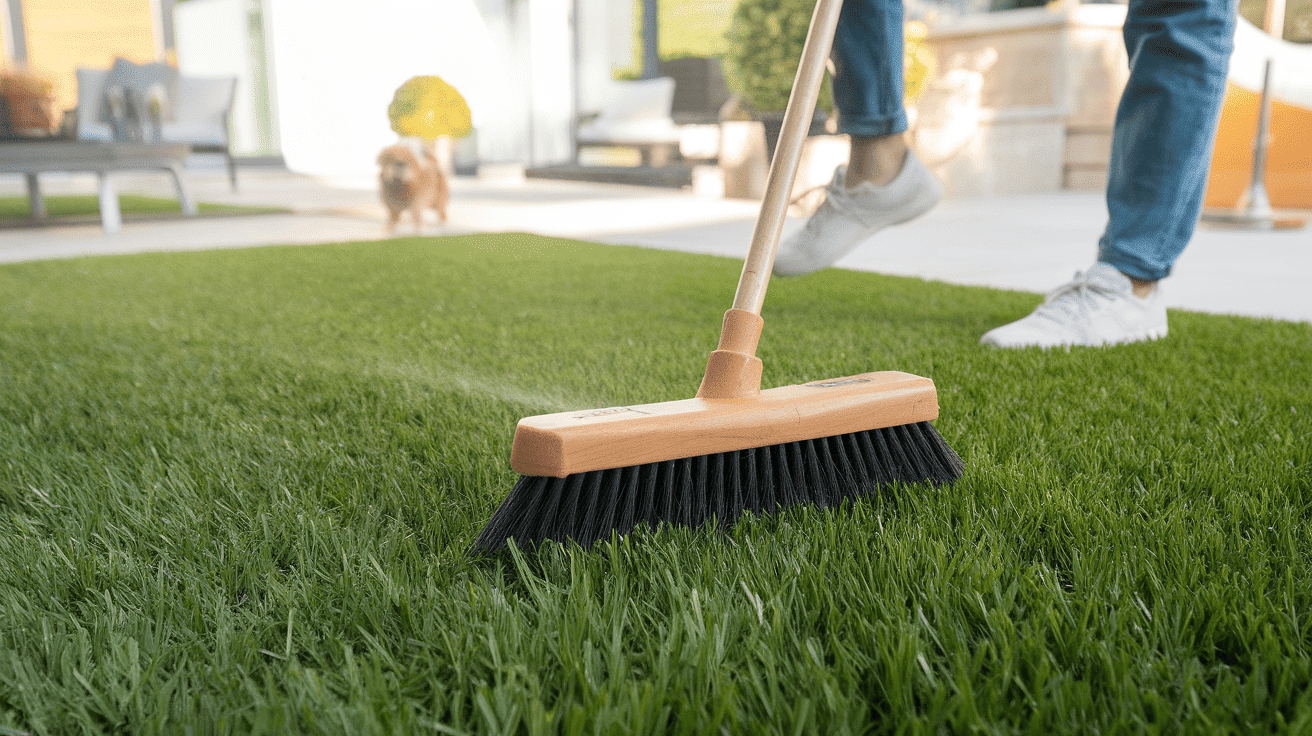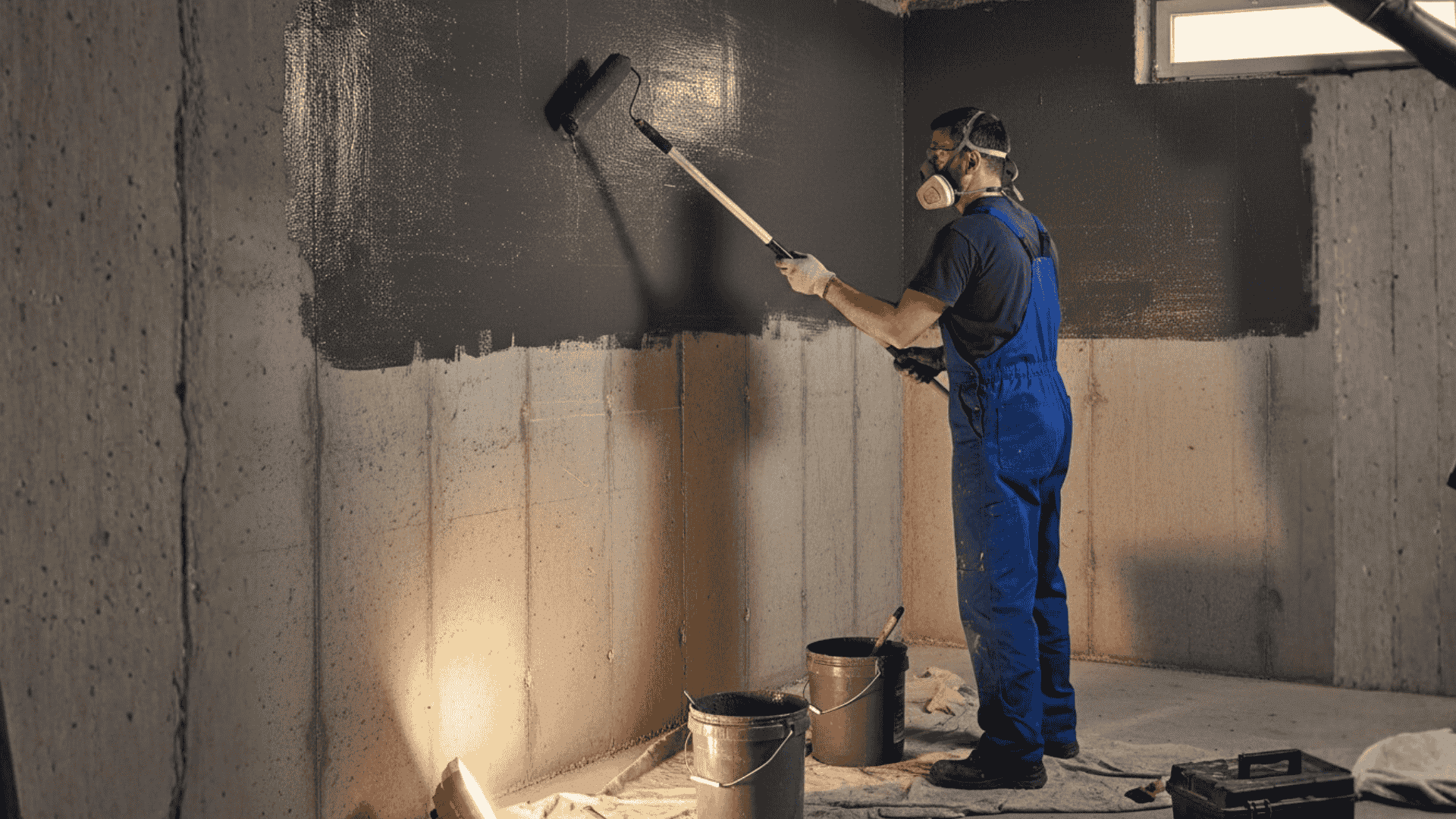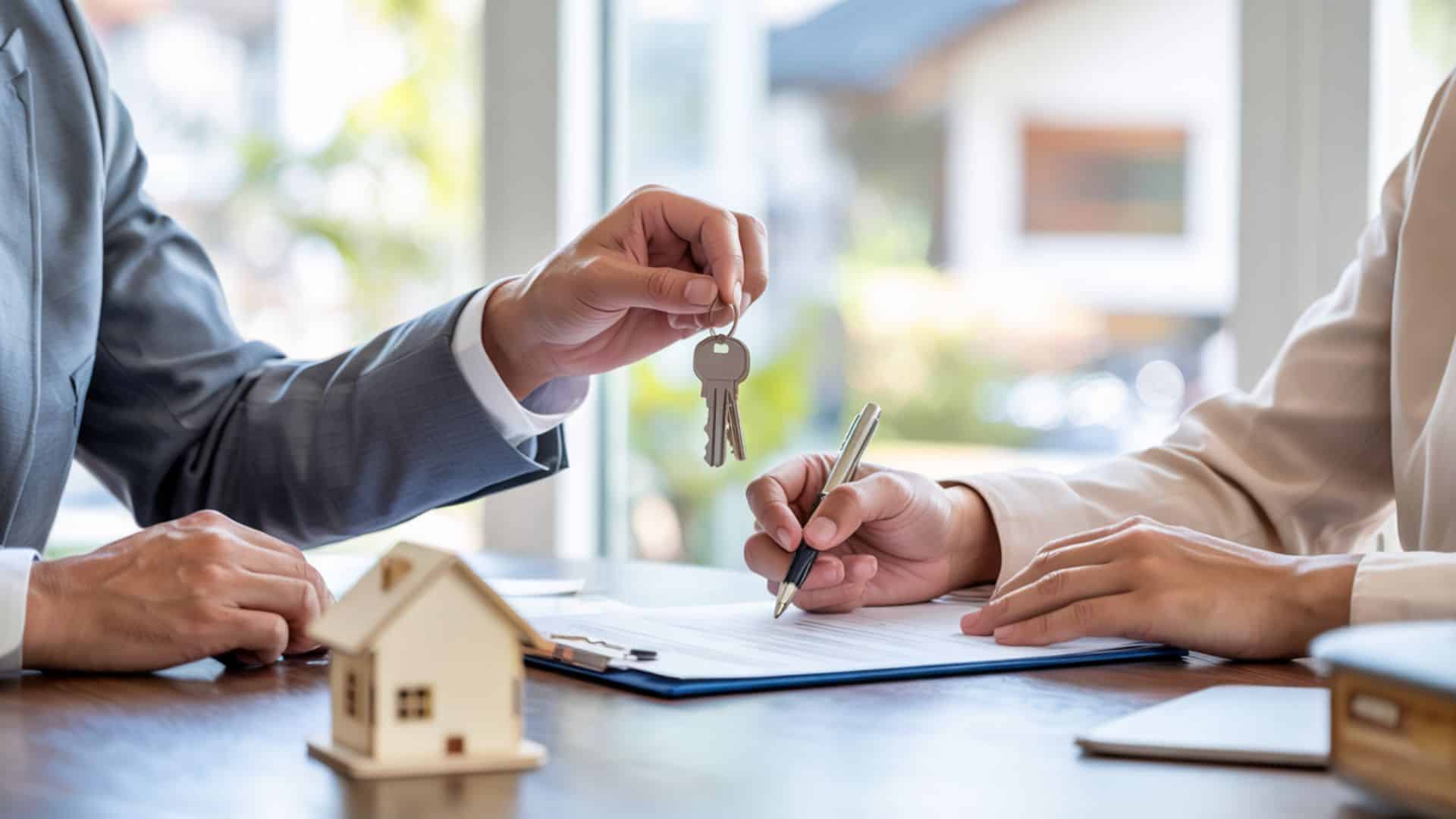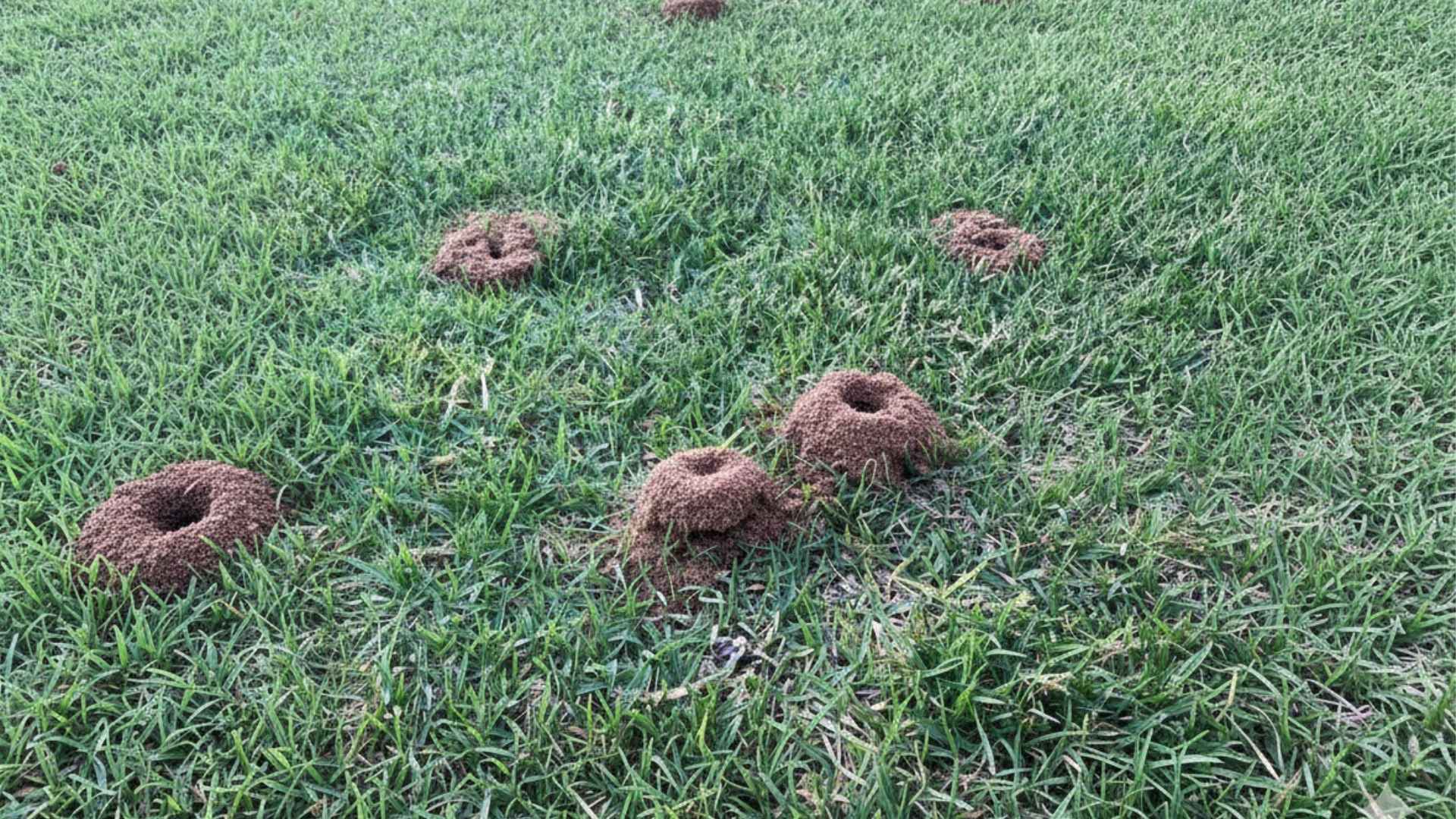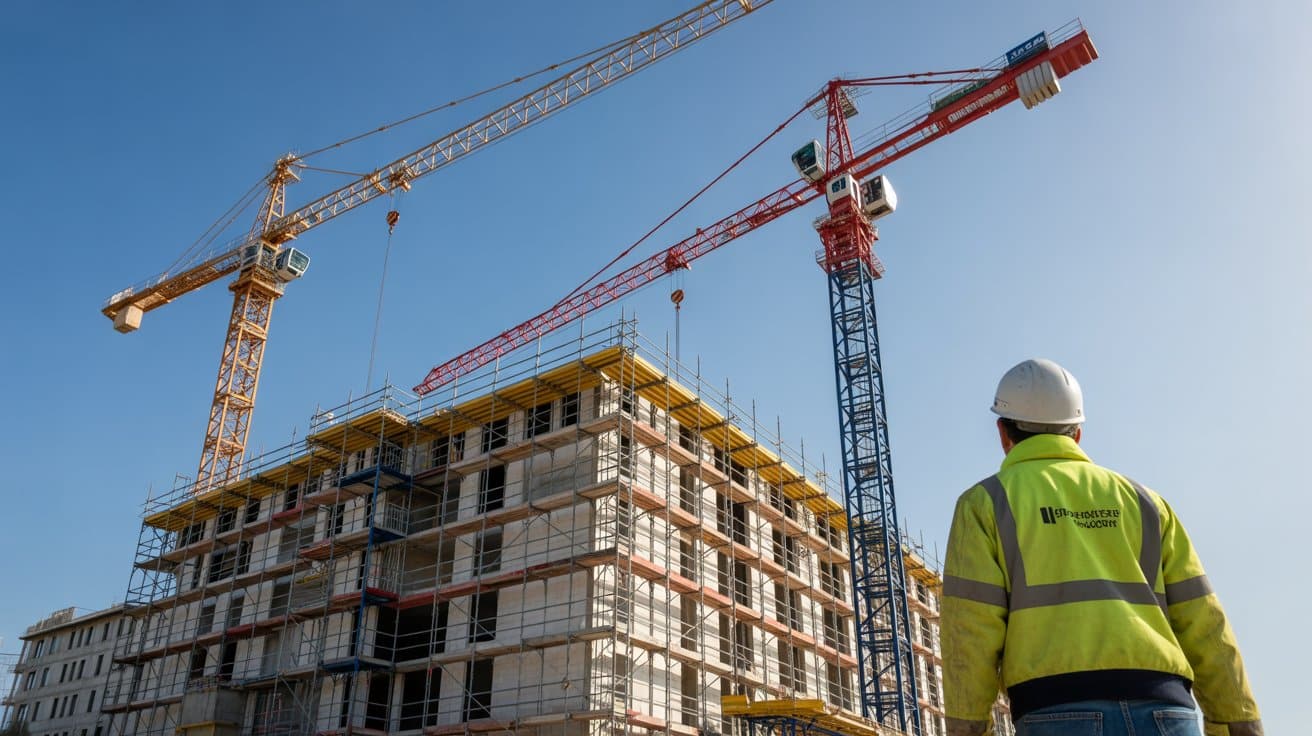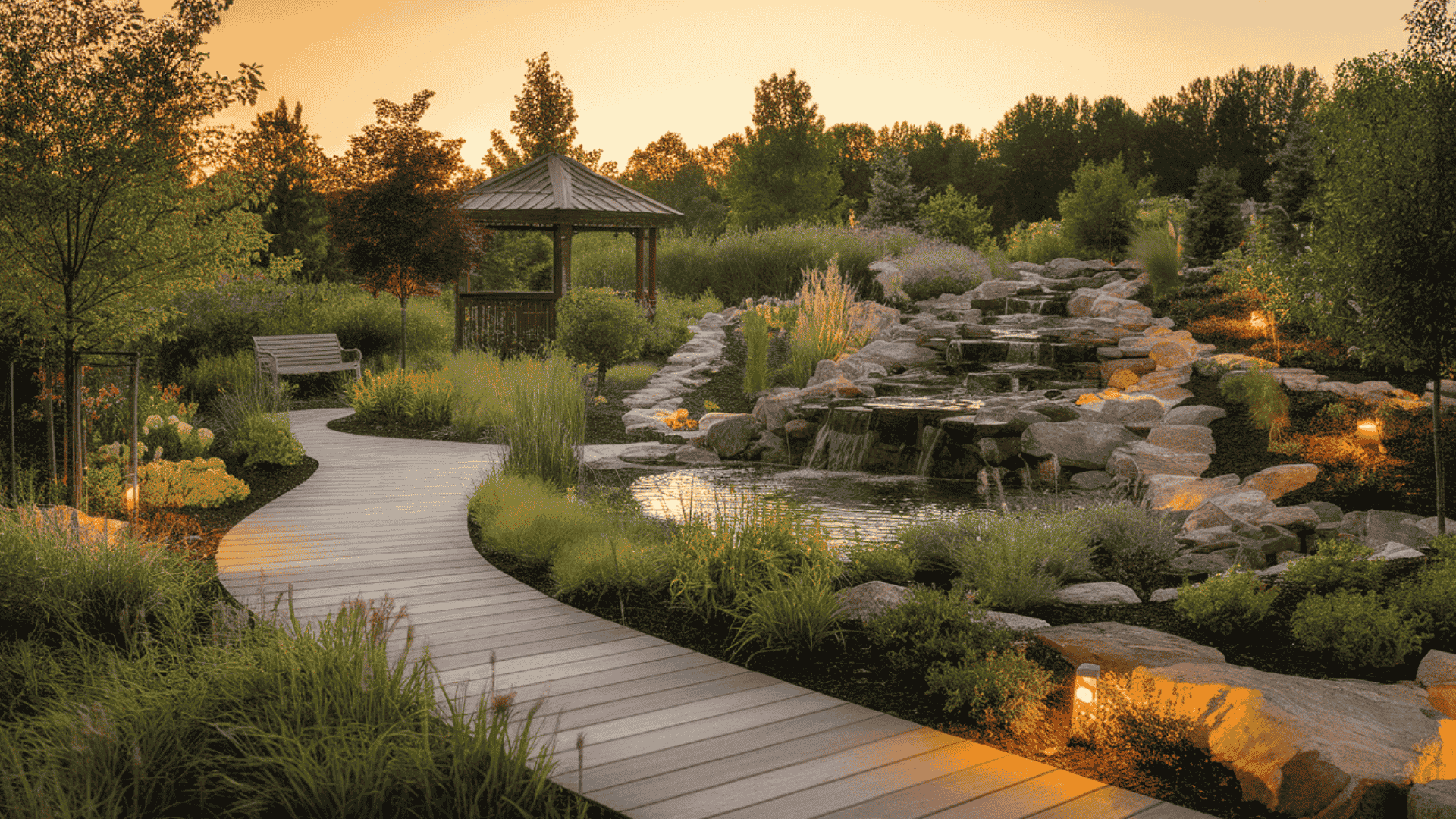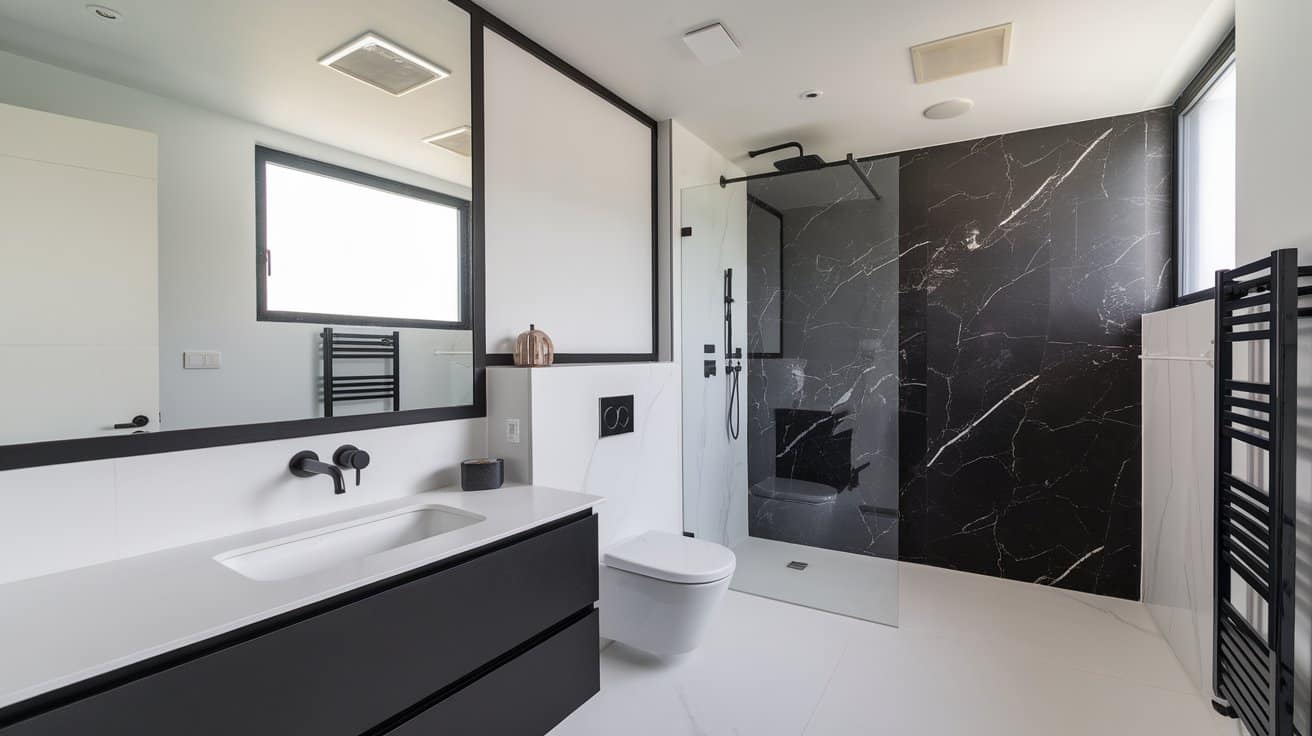Do you want your artificial grass to look fresh and last for decades?
Most homeowners find their synthetic lawn develops unpleasant odors, stubborn stains, and bacterial buildup within months of installation.
The problem is that without proper cleaning, your expensive investment quickly becomes a breeding ground for harmful bacteria and persistent smells that regular hosing cannot remove.
Learning how to clean artificial grass correctly saves you thousands in replacement costs while keeping your family safe.
Professional cleaning techniques can restore even neglected synthetic lawns to like-new condition.
This article reveals the exact methods professionals use to clean fake grass. You’ll master the complete artificial grass maintenance system that keeps your lawn beautiful and odor-free for years.
Why Clean Artificial Grass?
Artificial grass needs less maintenance than real grass. However, it’s not completely maintenance-free.
Regular cleaning keeps your fake grass looking good and helps it last longer. Without care, your investment won’t reach its full lifespan.
Daily life brings challenges to your synthetic lawn. Wind carries dust and debris onto the surface. Fallen leaves collect in corners and edges.
Pets leave waste that can create lasting odors. Weather conditions like rain and humidity promote moss growth in shaded areas. Family activities often result in spills and stains that require attention.
Without proper care, several problems show up:
- Odor issues develop from pet urine and organic waste. The smell gets trapped in the backing material. It becomes worse during hot weather.
- Stains appear from food spills, drinks, and natural debris. These marks make your lawn look old and dirty.
- Matting happens when fibers get pressed down. Heavy foot traffic and furniture cause this. The grass loses its natural look.
- Weeds grow through drainage holes or along edges. They compete with your turf and create an ugly appearance.
- Moss forms in damp, shaded areas. It makes the surface slippery and damages the backing over time.
Regular cleaning prevents these issues. It keeps your investment looking good for 15-20 years. Clean artificial grass also stays safer for children and pets to play on.
How Often Should You Clean Artificial Grass?
The cleaning schedule depends on how you use your lawn. Different areas need different care levels.
Weekly maintenance keeps your artificial grass fresh with minimal effort. Use a leaf blower to remove debris and brush high-traffic areas with a stiff broom. This takes 10-15 minutes.
Monthly deep care involves rinsing the entire area with medium water pressure. Spot clean stains and check drainage by pouring water in different spots.
Seasonal maintenance happens every 1-3 months. Deep clean with thorough rinsing, add new infill material, and apply moss prevention treatments in shaded areas.
Pet owners need daily waste removal and weekly odor treatment. Homes with children require more frequent cleaning of play areas.
Tree coverage and dusty climates increase cleaning frequency. Heavy foot traffic from events needs immediate attention.
Complete Artificial Grass Cleaning Process
This step-by-step process will teach you how to clean artificial grass like a professional. Before starting, gather the right tools and materials to ensure effective and safe cleaning.
What You’ll Need
- Power brush or stiff broom
- Wet/dry vacuum or leaf blower
- Garden hose with spray nozzle
- Artificial grass cleaning solution (pet-safe)
- Stiff scrub brush for tough stains
- Protective gloves
Now that you have all the necessary equipment ready, it’s time to start the cleaning process. Follow these professional steps to achieve the best results and to avoid damaging your artificial grass.
Step 1: Apply Pre-Treatment
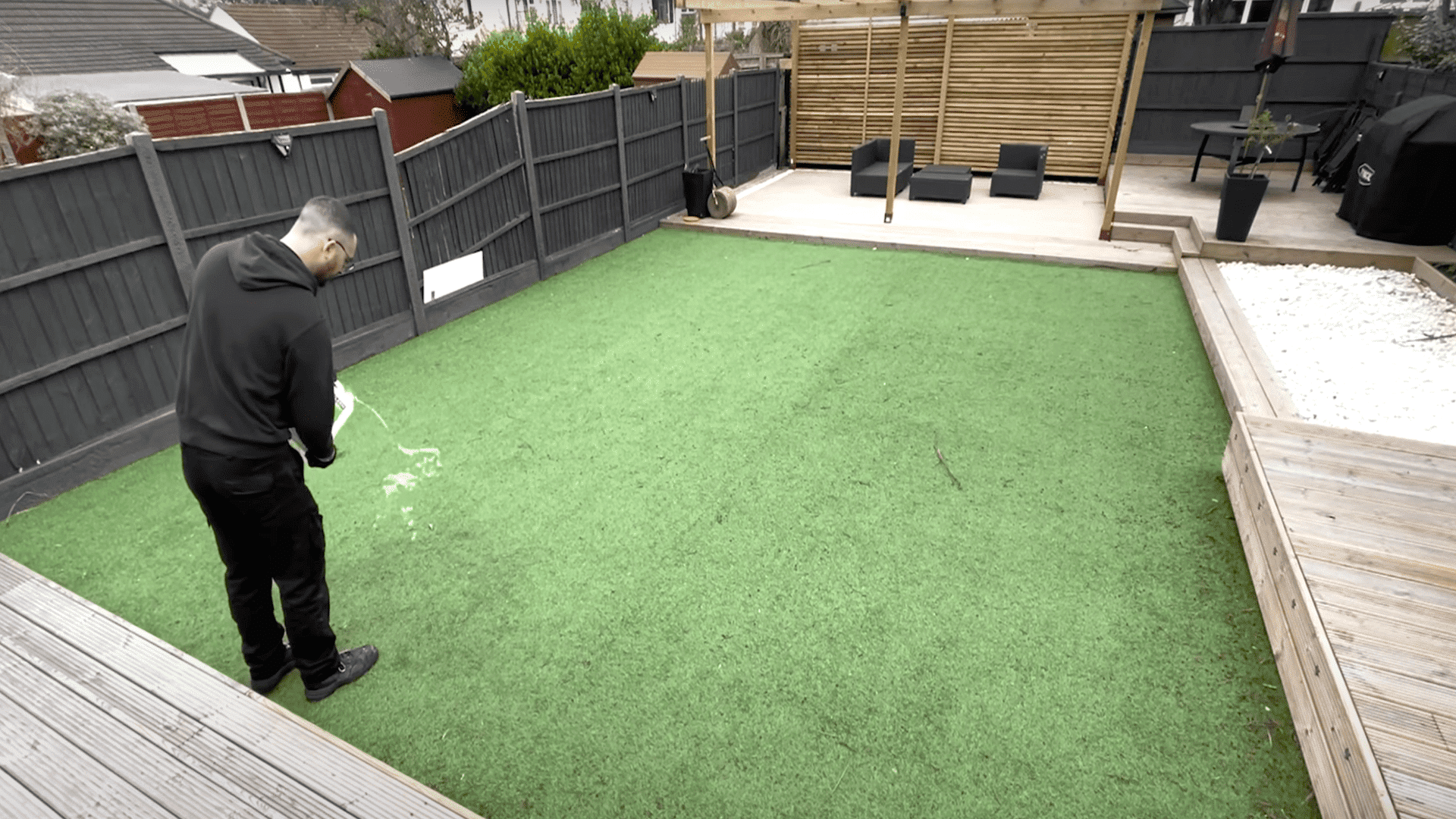
Start by applying the cleaning solution to the dirtiest areas of your artificial grass. Focus on spots with visible stains, pet waste areas, or heavily trafficked zones.
This pre-treatment helps break down stubborn grime before the main cleaning process.
Step 2: Remove Large Debris

Use a power brush or stiff broom to sweep all debris toward the edges of your turf area. Pay attention to areas under furniture and corners where dirt accumulates.
Use a wet/dry vacuum or leaf blower to collect all the debris you’ve pushed to the edges. Also, clean surrounding decking or patios where debris may have been scattered.
Step 3: Hand Scrub Tough Stains
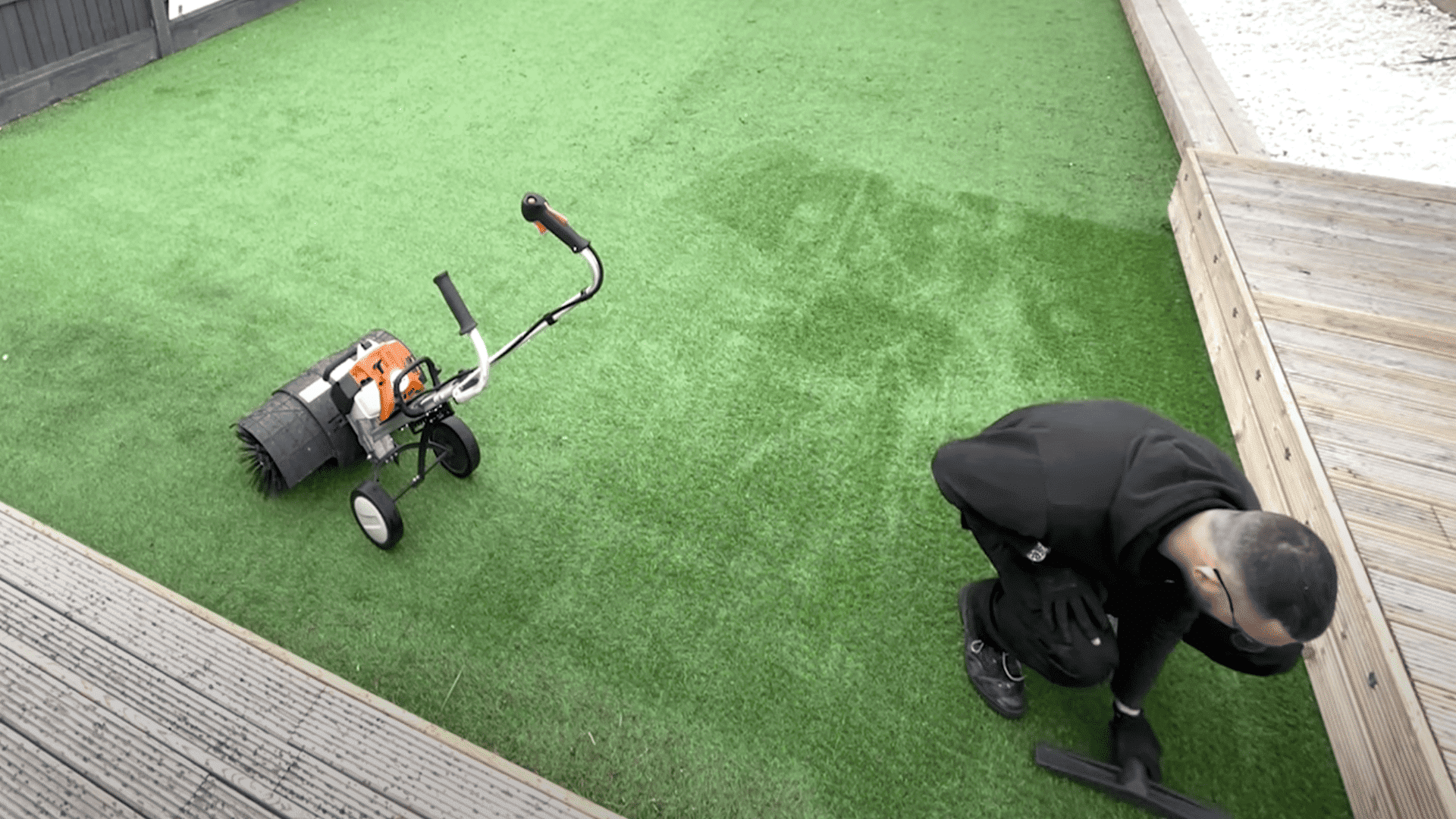
For dried pet waste or other stubborn stains that the power brush couldn’t remove, use a hard scrub brush and work by hand. This is the least enjoyable part, but it is necessary for a thorough clean.
Work when the surface is dry; wet conditions make this task much harder.
Step 4: Detailed Debris Removal

This step takes the most time but is crucial for a professional result. Vacuum up all the small bits of debris that get scattered during brushing. Focus on edges and corners where tiny particles collect.
The goal is to remove all debris from both the surface and what’s embedded in the grass fibers.
Step 5: Apply Full Cleaning Solution

Once debris removal is complete, apply your artificial grass cleaning solution across the entire area. This sanitizes the surface, kills bacteria from pet waste, and removes odors.
Choose a pet-safe cleaner that won’t harm animals once dry. Many products come in pleasant scents like fresh-cut grass.
Step 6: Final Rinse and Finishing
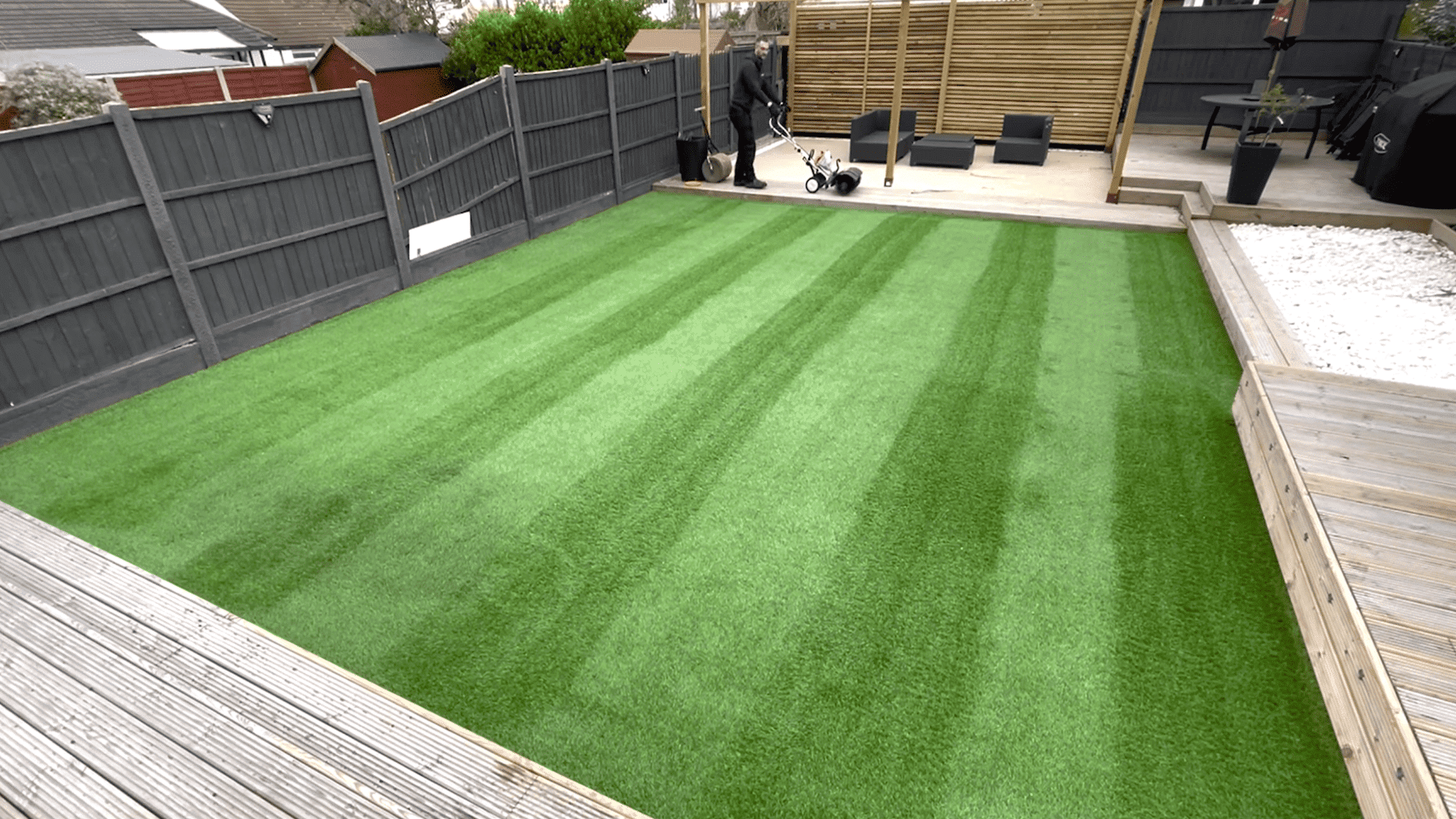
Rinse the entire area thoroughly with your garden hose to remove all cleaning product residue.
Allow at least one hour of drying time before allowing pets or heavy foot traffic back on the surface.
For a professional finishing touch, you can brush the grass in alternating directions to create stripe patterns similar to a freshly mowed lawn.
This optional step is purely cosmetic but gives a polished, showroom-ready appearance.
Video Tutorial
I’d like to give credit to Kirbside Cleaning for their informative video, as a reference for this guide.
Common Artificial Grass Problems and Solutions
Artificial grass can develop various issues that need ongoing attention. Quick action prevents lasting problems and keeps your turf looking its best.
| Problem Type | Prevention | Treatment |
|---|---|---|
| Pet Waste | Remove immediately with a bag/scooper | Rinse the area with water after removal |
| Urine Odors | Regular brushing for air circulation | Weekly: 50/50 vinegar-water spray Monthly: enzyme cleaners |
| Weeds | Pre-emergent herbicide (spring/fall) Proper edging installation |
Fill gaps along edges immediately |
| Moss | Weekly brushing in shaded areas Trim plants for air flow |
Apply moss killer for synthetic turf |
| Algae | Avoid soaps during cleaning Maintain proper drainage |
Monthly algae prevention products |
| Organic Buildup | Weekly brushing with a stiff broom | Focus on shaded, damp areas |
Artificial grass isn’t maintenance-free – it just needs different care than real grass. Most problems stem from poor drainage, lack of brushing, or neglecting small issues until they escalate.
Weekly brushing and quick cleanup prevent 90% of artificial grass headaches, while skipping regular care means paying more later for deep cleaning or repairs.
|
Important Safety Note Always use pet-safe products and rinse away all cleaners before letting pets return to the area. Choose products labeled safe for artificial grass, as many traditional cleaners can damage synthetic fibers. Apply treatments when temperatures are below 80°F for best enzyme cleaner effectiveness. |
The Bottom Line
Learning how to clean artificial grass properly transforms your synthetic lawn from a maintenance headache into a beautiful investment.
Regular cleaning prevents the odors, stains, and bacterial growth that plague neglected fake grass installations.
The cleaning methods in this guide work for any artificial grass type. From weekly debris removal to seasonal deep cleaning, each step maintains your lawn’s appearance and safety.
Your artificial grass maintenance routine doesn’t have to be complicated. Start with the basic cleaning schedule and adjust based on your needs.
With consistent care, your synthetic lawn will stay fresh and safe for years.
What cleaning challenges have you faced with your fake grass? Share your experiences in the comments to help other homeowners maintain their artificial lawns.
Find more simple DIYs and home repair ideas.
